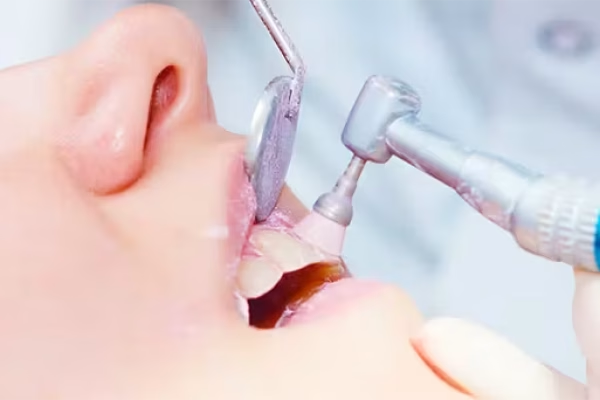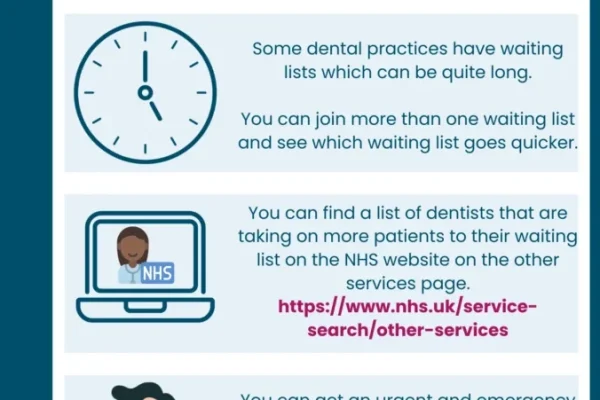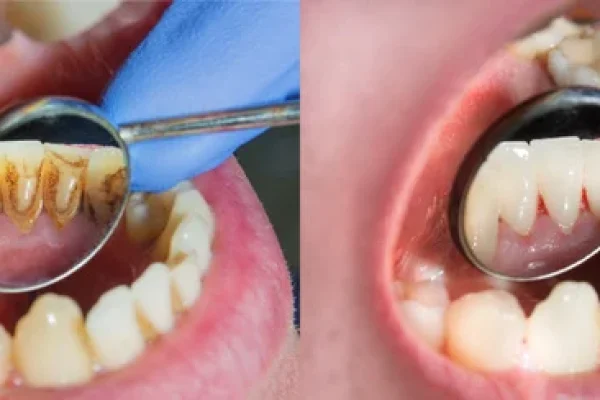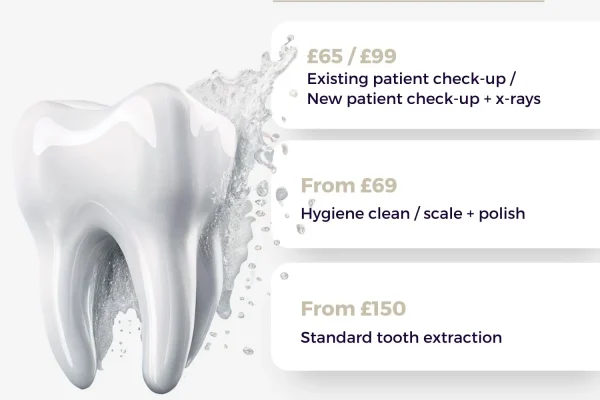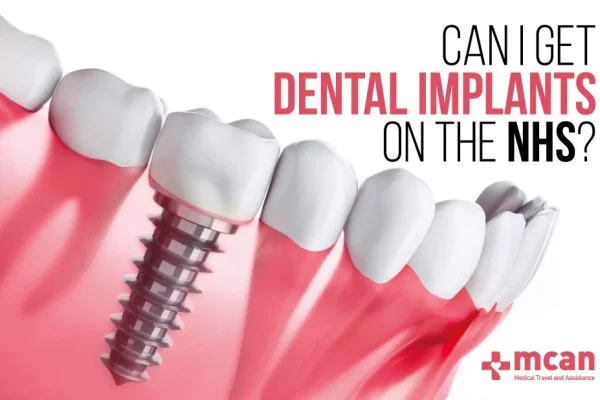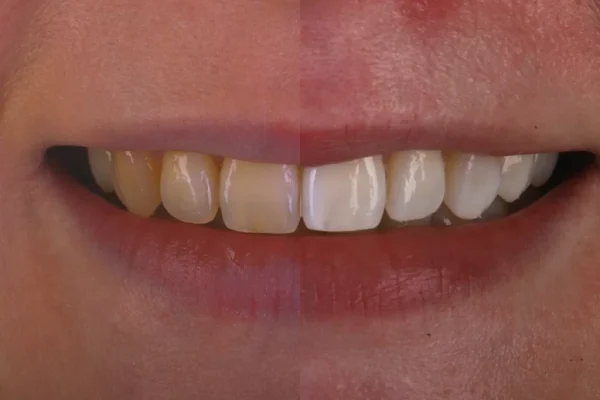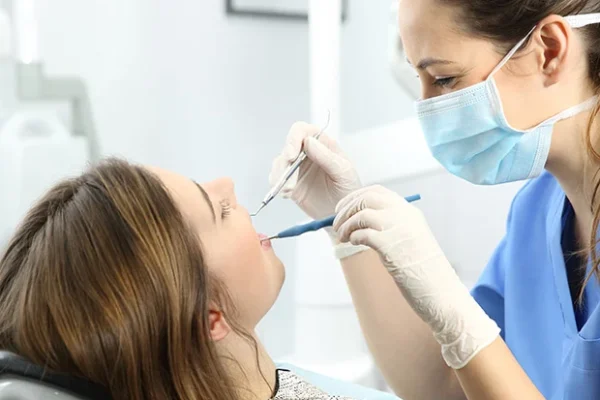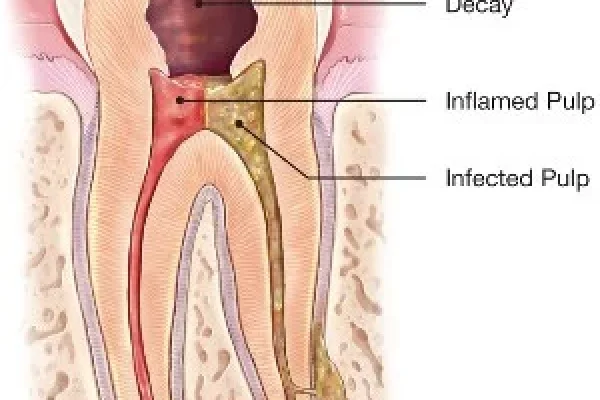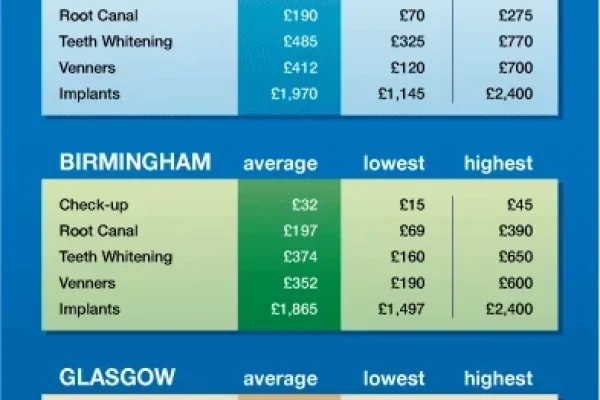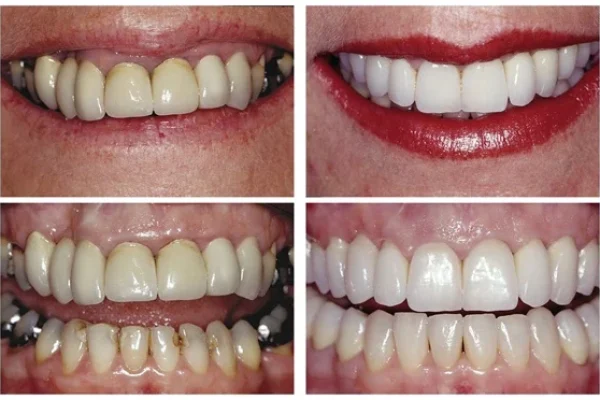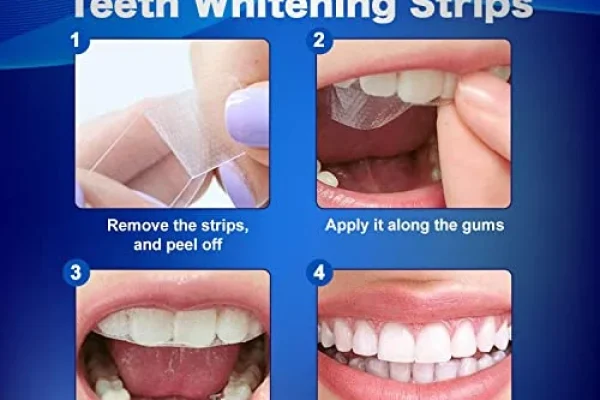
Table of Contents
ToggleKey Takeaways
-
- Reversing gum disease *naturally at home* is generally possible only for the early stage, gingivitis.
-
- Key to home “cures” is impeccable oral hygiene to remove plaque.
-
- Natural remedies like salt water and turmeric can *support* healing and reduce inflammation but don’t replace cleaning.
-
- You *cannot* remove hardened tartar (calculus) at home; professional cleaning is required.
- Established periodontitis (with bone loss) cannot be fully *reversed* naturally at home; professional treatment and ongoing management are essential.
What Are the Natural Ways How to Cure Gum Disease Without a Dentist?
When people talk about “natural ways to cure gum disease,” they’re typically referring to a suite of approaches that sidestep conventional pharmaceuticals and clinical interventions, leaning instead on ingredients and practices often found in nature or historical wellness traditions. Think herbal rinses, specific dietary tweaks, mineral-rich pastes, and enhanced mechanical cleaning techniques performed diligently at home.
The philosophy behind these methods is rooted in the idea that the body, given the right support and the removal of irritants, possesses a remarkable capacity for healing. In the context of gum disease, this support often translates to reducing inflammation, disrupting the bacterial biofilms (plaque) that are the primary culprits, and nourishing the gum tissues to aid repair. These *holistic remedies for gum disease* aren’t magic bullets promising overnight miracles; rather, they are tools designed to create an environment in the mouth that is less hospitable to the harmful bacteria that cause gingivitis and periodontitis, while simultaneously soothing irritated tissues.
The effectiveness of these *gum disease home remedies* hinges significantly on the stage of the disease. For the early stage, gingivitis, characterized by red, swollen, or bleeding gums without bone loss, these natural approaches, combined with rigorous home care, can be remarkably effective, potentially leading to a full reversal of symptoms. They aim to calm the angry tissues, sweep away the bacterial invaders, and prevent the condition from worsening.
However, it’s absolutely crucial to understand that when the disease has progressed to periodontitis – where the infection has begun to destroy the bone and tissues supporting the teeth, creating pockets – the landscape changes dramatically. While natural methods can still play a vital role in managing symptoms, reducing inflammation, and potentially slowing progression by keeping bacterial levels down, they generally cannot regenerate lost bone or tissue or remove the hardened deposits (tartar or calculus) deep within periodontal pockets.
The primary goal of using *natural ways to treat gum disease* at home is thus two-fold: for early stages, it’s potential *reversal* through aggressive management; for later stages, it’s diligent *management* to control the condition and prevent further damage, often alongside professional treatment. It’s about leveraging nature’s arsenal – its anti-inflammatory herbs, its antibacterial compounds, its tissue-supporting nutrients – to bolster your mouth’s natural defenses and create a cleaner, calmer environment where gums can heal and thrive.
Can Gum Disease Be Cured Naturally at Home?
Let’s tackle this head-on, because the word “cure” is potent and needs careful definition in the context of gum disease, especially when talking about home-based, natural methods.
The simple answer is: it depends entirely on the stage of the disease.
If you’re experiencing gingivitis – that initial, milder form where your gums might be red, swollen, or occasionally bleed when you brush or floss – then yes, absolutely, gum disease in *this early stage* can often be reversed naturally at home with consistent, correct practices. Gingivitis is an inflammatory response to plaque buildup. By diligently removing that plaque and using *natural remedies for gum infection* or *gum care home remedies* that reduce inflammation and bacterial load, you can typically restore your gums to a healthy state. This means the redness subsides, the swelling goes down, and the bleeding stops. In this sense, you are “curing” the gingivitis because you are eradicating the condition.
However, if you’re dealing with periodontitis – the more advanced, destructive stage characterized by receding gums, deeper pockets around the teeth, bone loss, and potentially loosening teeth – the situation is significantly different. Periodontitis is not merely an inflammation; it’s an infection that has caused physical damage to the supporting structures of your teeth. Natural methods and home care, no matter how diligent, generally *cannot* reverse bone loss or regrow gum tissue that has receded due to periodontitis. They also cannot remove calcified tartar (calculus) that forms below the gum line in these advanced stages, which acts as a persistent irritant and reservoir for bacteria.
While natural approaches and excellent home hygiene are absolutely critical for *managing* periodontitis, controlling inflammation, reducing bacterial levels, and preventing the disease from worsening, they typically cannot achieve a complete “cure” or reversal of the structural damage that has already occurred.
Therefore, while you can potentially *cure* gingivitis naturally at home, you generally cannot *cure* established periodontitis solely with home methods. Think of it less as a standalone “cure” for all stages and more as powerful tools for *reversal* in the early stages and essential *management* and *support* in the later stages, always ideally alongside professional dental care for the latter.
Can You Heal Gum Disease Naturally Using Home Remedies?
Shifting our focus from the loaded term “cure” to the more accurate concept of “healing” or “reversal,” especially in the context of early gum issues, home remedies truly come into their own. Many traditional and natural substances possess properties that directly address the symptoms and underlying causes of gingivitis and mild gum irritation. We’re talking about the discomfort of swollen tissues, the unpleasant reality of persistent bad breath caused by bacteria, and the alarming sight of blood after brushing. These are the battlegrounds where *home remedies for gum problems* can make a significant impact.
By incorporating specific natural agents into your daily routine, you introduce substances that can soothe irritated tissues (anti-inflammatory), fight the bacteria driving the problem (antimicrobial/antiseptic), and help restore a healthier balance in the mouth’s microbial ecosystem. The potential benefits extend beyond just symptom relief; consistent use of effective *gum problems natural remedies* can actively contribute to healing by reducing the persistent irritation that prevents tissues from recovering.
Imagine calm, pink gums instead of angry red ones, breath that’s fresh instead of foul, and brushing that leaves your sink clean instead of streaked with red. This isn’t just wishful thinking; it’s achievable for many people dealing with early-stage gum disease through dedicated home care.
However, and this is a point that cannot be stressed enough when discussing *how can I cure gum disease at home*, the efficacy of any home remedy, natural or otherwise, is directly tied to *consistency* and *correct application*. A salt water rinse once a week won’t undo the effects of daily plaque buildup. Using a turmeric paste improperly might cause staining without delivering therapeutic benefits. Healing is a process, not an event, and it requires persistent effort.
Furthermore, home remedies are most potent when used *in conjunction with*, not as a replacement for, fundamental excellent oral hygiene. They are powerful *adjuncts* to brushing and flossing, enhancing the cleaning efforts and providing additional therapeutic benefits. Relying solely on remedies while neglecting to physically remove plaque is like trying to bail out a leaky boat with a teacup; you’re not addressing the source of the problem.
But used wisely and consistently, *natural remedies for periodontal disease* (in its early form, gingivitis) and other gum problems can be invaluable allies in your quest for a healthier mouth, promoting healing and preventing the escalation of issues.
How to Fix Gum Disease at Home?
Okay, let’s break down the actionable steps involved in “fixing” gum disease at home, primarily focusing on reversing gingivitis and managing symptoms of more advanced stages. It’s not a single magical trick, but a multi-pronged strategy that combines meticulous cleaning with targeted natural interventions. Think of it as building a robust defense system right in your own mouth.
The absolute cornerstone, the non-negotiable foundation, is impeccable oral hygiene. Gum disease is fundamentally caused by the bacteria in plaque, a sticky film that constantly forms on your teeth. If you don’t remove the plaque effectively and regularly, nothing else you do will fully succeed. So, step one is mastering your brushing and flossing technique – we’ll get into the specifics later, but know that this means brushing twice a day for two minutes, paying close attention to the gum line, and flossing daily to clean between teeth where brushes can’t reach. This physical removal of plaque is paramount.
Step two involves introducing natural remedies or specific products known for their ability to reduce inflammation and bacterial load. This is where things like salt water rinses, certain herbal extracts, or specialized toothpastes/mouthwashes come into play. These aren’t replacing the mechanical cleaning but are *enhancing* its effects, reaching areas the brush and floss might miss and providing therapeutic benefits to the gum tissues themselves.
Step three is consistency. Fixing gum disease at home isn’t a one-week project; it’s a lifestyle change. Plaque forms daily, so plaque control must be daily. Remedies must be used as directed, regularly, to maintain their effects.
Step four is addressing lifestyle factors. Diet plays a role – reducing sugary foods and drinks starves the harmful bacteria, while eating nutrient-rich foods, especially those high in Vitamin C, supports tissue healing. Smoking is a massive risk factor for gum disease and severely hinders healing; quitting is essential. Managing stress can also help, as stress can impact immune function.
Step five, and this is crucial for anyone past the very earliest signs of gingivitis, is knowing the limits of home care. If symptoms persist or worsen, or if you suspect you might have periodontitis (receding gums, loose teeth, deep pockets, persistent bad breath despite cleaning), home efforts become about *management* and slowing progression, and professional dental help is absolutely necessary to diagnose the extent of the problem and perform procedures like deep cleaning (scaling and root planing) that remove calcified deposits only a professional can tackle.
Fixing gum disease at home, therefore, means committing to a comprehensive daily routine that physically removes the cause (plaque), utilizes natural aids to support healing and reduce bacteria, incorporates healthy lifestyle habits, and includes monitoring your symptoms to understand when professional intervention is required.
What’s a Good Home Remedy for Gum Disease?
Defining a single “best” home remedy for gum disease is tricky, as effectiveness can vary depending on the individual, the specific symptoms, and the underlying cause (though plaque is almost always involved). However, some *home remedies gum disease* sufferers frequently turn to are widely recommended for their accessible ingredients, relative safety, and evidence-backed properties, primarily focusing on reducing inflammation and offering mild antiseptic effects.
Perhaps the most universally recognized and recommended is the simple salt water rinse. It’s inexpensive, easy to prepare, and remarkably effective at soothing inflamed gums and reducing bacterial numbers through osmosis. Warm salt water helps draw fluid out of swollen tissues, reducing puffiness and inflammation. Furthermore, salt has mild antiseptic properties; while it won’t sterilize your mouth, it can make the environment less favorable for bacterial growth. It also helps to cleanse debris from around the teeth and gums. It’s a go-to recommendation for post-surgical oral care for a reason – it works gently but effectively to promote a cleaner environment.
Another popular contender, gaining traction due to increasing research, is turmeric. The active compound, curcumin, is a potent anti-inflammatory and antioxidant, and studies suggest it can be beneficial for gum health when used topically or even systemically. Applying a paste directly or using a turmeric rinse might help calm inflamed gum tissues.
Certain natural oils also feature prominently in discussions about *natural medicine for gum disease*. Oil pulling, traditionally done with sesame or coconut oil, is believed by proponents to help “pull” bacteria and toxins from the mouth. While scientific evidence is still somewhat limited on its effectiveness compared to traditional methods like flossing, it is generally considered safe when done correctly and some people report feeling a cleaner mouth. Essential oils like tea tree oil or peppermint oil also possess antimicrobial properties, but they must be used with extreme caution and heavily diluted due to their potency and potential for irritation or toxicity if ingested.
Rinses made with specific herbal teas, such as chamomile or green tea, can offer soothing, anti-inflammatory benefits.
Ultimately, a “good” home remedy is one that is safe for you to use, addresses your specific symptoms (like inflammation or mild infection), is something you can easily incorporate into your routine consistently, and ideally has some basis in traditional use or scientific investigation for its properties. It’s often a process of finding which safe, natural option works best for *your* mouth, used in conjunction with diligent cleaning.
Which Specific Home Remedies Can Help Treat Gum Disease?
Moving beyond the general idea of using natural methods, let’s zero in on some of the specific players in the home remedy arena. These are the ingredients you might already have in your pantry or can easily acquire, each bringing its own set of properties to the table in the fight against gum irritation and infection.
While none of these should be viewed as standalone “cures” for advanced disease, they can be powerful allies in managing symptoms, reducing inflammation, and creating a less hospitable environment for the harmful bacteria that contribute to gum disease, particularly gingivitis. Think of them as targeted interventions, each with a unique mechanism of action, whether it’s soothing irritated tissues, directly combating microbes, or supporting the body’s natural healing processes.
The efficacy often lies in the application – ensuring you use them correctly, at the right concentration, and consistently as part of your daily oral hygiene routine. From age-old rinses passed down through generations to potent spices celebrated in traditional medicine, the world of natural remedies offers a diverse toolkit. We’ll explore some of the most popular and promising options, discussing *why* they might work and, crucially, *how* to use them safely and effectively.
It’s about understanding the science (or traditional wisdom) behind the remedy and applying that knowledge practically in your daily *gums treatment natural* regimen. Remember, these are not substitutes for mechanically removing plaque and tartar, especially the hardened calculus that adheres firmly to teeth; that requires elbow grease from you (brushing/flossing) or professional tools from a dentist.
But combined with excellent hygiene, these natural remedies can significantly boost your efforts towards healthier gums, offering anti-inflammatory, antimicrobial, and soothing benefits that complement your cleaning routine.
Is Salt Water Good for Gum Disease and How Do You Use It?
Absolutely. Salt water is arguably the most widely recommended and accessible home remedy for gum irritation and inflammation, and it’s backed by a surprising amount of historical use and even some modern dental endorsements for specific situations like post-surgical healing.
So, *is salt water good for gum disease*? Yes, particularly for soothing inflammation associated with gingivitis and reducing the overall bacterial load in the mouth.
How does it work? The principle is quite simple: osmosis. When you rinse with salt water, you create a temporary environment that helps draw fluid out of swollen tissues, reducing puffiness and inflammation. Furthermore, salt has mild antiseptic properties; while it won’t sterilize your mouth, it can make the environment less favorable for bacterial growth. It also helps to cleanse debris from around the teeth and gums.
Using it is straightforward: dissolve about half a teaspoon of salt (table salt or sea salt is fine) in a cup (8 ounces) of warm water. The warmth can be particularly soothing for sore gums and helps the salt dissolve better. Swish the solution around your mouth vigorously for 30 seconds to a minute, making sure to get it into all areas, especially around the gum line. Then, spit it out – do not swallow it, as ingesting too much salt isn’t good for your body. You can repeat this rinse two to three times a day, particularly after brushing and flossing, or whenever your gums feel irritated. It’s especially helpful first thing in the morning and before bed.
A crucial *caution*: while rinsing is beneficial, *can I rub salt directly on my gums*? Generally, no. Rubbing salt directly on inflamed gums can be too abrasive and potentially cause more irritation or even damage to delicate tissue. Stick to rinsing.
*Does salt water help gum disease* specifically gingivitis? Yes, it’s a staple recommendation because it effectively targets the inflammation and bacterial overgrowth characteristic of this early stage.
*Can salt water cure gingivitis*? While it’s a powerful aid, remember the ‘cure’ comes from consistent plaque removal. Salt water *assists* by managing inflammation and bacteria, making it easier for your gums to heal once the plaque is gone. It’s a simple, effective, and safe first line of defense for many gum issues.
How to Use Turmeric for Gum Disease and What Are Its Benefits?
Turmeric, that vibrant yellow spice celebrated in kitchens and traditional medicine systems like Ayurveda, has garnered significant attention for its potential health benefits, including those related to oral health. The key player is curcumin, the compound responsible for turmeric’s distinctive color and much of its therapeutic power. Curcumin is a potent anti-inflammatory and antioxidant.
Given that gum disease is fundamentally an inflammatory condition triggered by bacteria, applying an anti-inflammatory agent directly to the affected area makes intuitive sense.
So, *how to use turmeric for gum disease*? There are a few methods. One popular approach is creating a paste. Mix about a quarter to half a teaspoon of pure turmeric powder (ensure it’s food-grade and preferably organic to avoid contaminants) with a little water, coconut oil, or mustard oil – just enough to form a thick paste. You can then gently massage this paste onto your gums, leave it for 5-10 minutes, and rinse thoroughly.
Another method is a turmeric rinse: steep half a teaspoon of turmeric powder in a cup of warm water, let it cool slightly, and use it as a mouthwash after brushing.
Some people also take curcumin supplements, believing that systemic benefits can extend to oral health, though direct topical application targets the gums more directly.
What are its *benefits*? Studies suggest curcumin can help reduce gum inflammation, potentially inhibit the growth of some oral bacteria, and act as an antioxidant, protecting gum tissues from damage. Its anti-inflammatory action can soothe redness and swelling, common symptoms of gingivitis.
*Warning:* Turmeric is notorious for staining! It can stain teeth, dental work (like fillings or crowns), and anything else it touches. Rinsing thoroughly and being careful during application can help minimize staining, but it’s a risk to be aware of.
While promising for managing inflammation and as an antimicrobial aid, turmeric, like other home remedies, isn’t a substitute for professional cleaning or treatment for advanced periodontitis. It’s a natural adjunct that leverages powerful anti-inflammatory properties to support gum health when used consistently as part of a comprehensive oral care routine.
Is There a Homemade Antibiotic or Strong Natural Remedy for Gum Infection?
This is a critical question, and one that requires a very careful, clear answer. The desire for a *homemade antibiotic* for a gum infection is understandable – infections are painful and alarming. However, it’s absolutely crucial to distinguish between natural substances with antimicrobial *properties* and true, pharmaceutical-grade *antibiotics*.
A prescription antibiotic is a powerful medication specifically designed to kill or inhibit the growth of harmful bacteria, typically targeting systemic infections or localized infections that the body’s immune system cannot contain on its own.
*Homemade remedies, no matter how strong their natural components, are NOT true antibiotics and should never be relied upon to treat a confirmed bacterial infection that requires medical intervention.* Using inadequate or inappropriate methods to treat a genuine infection can allow it to spread, potentially causing severe pain, abscesses, damage to bone and tissue, and even systemic health problems.
That being said, *are there strong natural remedies for gum infection* symptoms or to help control bacterial levels? Yes, some natural substances exhibit antimicrobial properties that can help manage the bacterial load in the mouth, which is the underlying cause of both gingivitis and periodontitis. Substances often cited include certain essential oils (like tea tree oil, peppermint oil, or clove oil), garlic (known for its compound allicin), or even high-concentration green tea extracts.
For instance, some studies show tea tree oil can reduce oral bacteria, but it MUST be heavily diluted (often just a drop or two per cup of water) as it’s toxic if swallowed and can cause severe irritation if used undiluted. Garlic can be chewed or applied as a paste, but its efficacy as a targeted “antibiotic” for gum disease is unproven, and it can cause significant irritation.
These natural agents can help *reduce bacteria* and *manage symptoms* like inflammation or mild irritation associated with bacterial presence, which is beneficial for gingivitis or as a supportive measure for periodontitis. However, if you have signs of a true infection – swelling, intense pain, pus, fever, or swelling in your face or neck – you need to seek professional dental or medical help immediately. Relying solely on a *homemade antibiotic* for a serious gum infection is dangerous and could lead to irreversible damage or systemic health complications.
Natural remedies can be powerful partners in *managing* the bacterial challenge of gum disease, but they cannot replace professional treatment or prescription antibiotics when a serious infection takes hold.
What Can I Drink or Apply for Immediate Gum Soothing or Infection Relief?
When your gums are throbbing, swollen, or feeling generally inflamed, immediate relief is often the top priority. While these measures won’t “cure” the underlying issue (which requires addressing plaque and possibly infection), they can certainly make you feel more comfortable while you pursue definitive treatment or wait to see a dentist.
So, *what can I drink or apply for immediate gum soothing or infection relief*? For soothing inflammation, warm rinses are your best friend. A warm salt water rinse, as discussed earlier, is excellent for reducing swelling and cleansing the area. Simple warm water rinsing can also provide comfort.
Herbal teas like chamomile or peppermint, used as warm (not hot) rinses, can also be soothing due to their natural anti-inflammatory or calming properties. Chamomile, in particular, is traditionally used to soothe irritation. You could brew a strong cup, let it cool to a comfortable temperature, and use it as a mouthwash.
For topical application directly to a sore spot, a dab of clove oil (used sparingly and cautiously, as it can be strong and burn if too much is used) is a traditional remedy for oral pain due to its eugenol content, which has a temporary numbing effect. However, this is for pain relief, not infection treatment.
Cold can also be your ally, particularly for swelling or localized pain (though often pain from gum disease is diffuse). Applying a cold compress or ice pack to the *outside* of your cheek near the affected area can help reduce swelling and numb the pain. Avoid putting ice directly on the gum tissue as this can cause tissue damage.
As for things to *drink* for relief, while no drink will cure an infection, sipping on cool water can sometimes be soothing for irritated gums. Anti-inflammatory drinks like green tea or turmeric tea (prepared with black pepper for absorption) might offer some systemic anti-inflammatory benefits over time, but they won’t provide immediate, localized relief in the way a rinse or compress might.
Importantly, any immediate relief measures are temporary bridges. They help manage the discomfort, but they don’t address the plaque, tartar, or infection causing the problem. If you’re experiencing significant pain or swelling, it’s crucial to use these remedies for comfort *while* you seek professional dental advice to identify and treat the root cause. They are excellent symptom managers, but not standalone solutions for progressive gum disease.
What Fruit is Good for Gum Disease and Overall Oral Health?
Beyond specific rinses and pastes, our diet plays a surprisingly significant role in the health of our gums. What we eat provides the building blocks for healthy tissues and can influence the inflammatory state of our bodies, including our mouths. So, *what fruit is good for gum disease* and overall oral health?
A key player is Vitamin C, a nutrient absolutely essential for collagen production. Collagen is a major component of gum tissue and the ligaments that hold your teeth in place. A deficiency in Vitamin C can lead to weakened gum tissue, making it more susceptible to disease and hindering its ability to heal – severe deficiency even leads to scurvy, a historical disease marked by severe gum breakdown.
Fruits rich in Vitamin C are therefore superstars for gum health. Think citrus fruits like oranges, grapefruits, lemons (though be wary of direct, prolonged exposure to lemon juice’s acidity on teeth enamel), and limes. Berries like strawberries, blueberries, and raspberries are also packed with Vitamin C and antioxidants. Kiwis, mangoes, and papayas are other excellent sources.
Beyond Vitamin C, many fruits are loaded with antioxidants and anti-inflammatory compounds that can help reduce systemic inflammation, which in turn benefits gum health. Crunchy fruits like apples (eaten whole, with the skin) and pears, while not necessarily treating existing disease, can also help clean teeth surfaces and stimulate saliva flow, which is beneficial for neutralizing acids and washing away food particles.
However, a word of caution: while fruits are healthy, many are also high in natural sugars and are acidic. It’s best to eat them as part of a meal rather than snacking on them constantly throughout the day, and rinse your mouth with water afterwards to help neutralize acids and wash away sugar, protecting your enamel.
So, focusing on a diet rich in Vitamin C-rich fruits and other nutrient-dense foods (like vegetables, nuts, seeds, and lean proteins) provides your body with the resources it needs to maintain healthy gum tissue, fight inflammation, and support healing, acting as a foundational support for all your other oral hygiene efforts. It’s not about one specific fruit curing the disease, but about leveraging the power of nutrition to create a healthier internal environment for your gums.
Can Lemon Cure Gum Disease or is it Harmful?
The appeal of lemon as a *natural way to cure gum disease* stems from its high Vitamin C content and perceived antimicrobial properties. Lemon juice *does* contain Vitamin C, which, as we’ve established, is vital for gum health and collagen synthesis. And in laboratory settings, compounds found in citrus fruits can show some activity against bacteria.
However, when considering using pure lemon juice directly on your gums or as a frequent rinse, the potential harm far outweighs any purported benefits for treating gum disease. The overwhelming issue with lemon juice is its extreme acidity. Enamel, the hard outer layer protecting your teeth, is vulnerable to acid erosion. Exposing your teeth and gums repeatedly to a highly acidic substance like pure lemon juice (which has a pH between 2 and 3) can demineralize and weaken enamel, making your teeth more susceptible to cavities and sensitivity. It can also irritate already inflamed gum tissues, potentially worsening symptoms rather than soothing them.
While getting Vitamin C from lemons as part of your diet is excellent (like drinking diluted lemon water or squeezing lemon on food), applying the concentrated juice directly to diseased gums is not recommended. Some proponents of *holistic remedies for gum disease* might suggest highly diluted lemon juice rinses, but even then, the acidic risk remains compared to gentler, equally effective options like salt water or herbal rinses.
Furthermore, while lemon might have some *in vitro* antimicrobial activity, there’s no reliable evidence it can effectively target and eliminate the specific complex bacterial biofilms responsible for gum disease when used as a home rinse or application without causing significant collateral damage to your teeth.
Therefore, despite its natural origins and Vitamin C content, the consensus among dental professionals and even many natural health practitioners is that applying or rinsing with pure or slightly diluted lemon juice to treat gum disease is generally harmful due to its erosive acidity and should be avoided. Stick to getting your Vitamin C from lemons through diet, and choose less acidic, safer natural remedies for topical gum care.
How Can You Improve Oral Hygiene Practices at Home to Treat Gum Problems?
Alright, let’s hammer this point home because it is the bedrock upon which all effective home treatment for gum problems stands: impeccable oral hygiene. You can rinse with salt water, rub turmeric paste, and eat all the Vitamin C-rich fruits you want, but if you are not consistently and effectively removing the sticky film of plaque from your teeth, you are simply not addressing the root cause of gingivitis and the primary driver of periodontitis progression.
Plaque is a complex community of bacteria living in a biofilm, constantly forming on tooth surfaces, especially near the gum line. These bacteria release toxins that irritate and inflame the gum tissue, initiating the disease process. Improving your oral hygiene practices at home isn’t just a suggestion; it’s a non-negotiable fundamental.
It’s about disrupting and removing that biofilm before it has a chance to cause significant harm or calcify into hard tartar (calculus), which is impossible to remove with brushing alone. Think of it as daily maintenance essential to keeping the structural integrity of your mouth intact. When done correctly and consistently, effective brushing and flossing dramatically reduce the bacterial load and inflammation, giving your gums a fighting chance to heal.
For gingivitis, this alone, often combined with a therapeutic rinse, is frequently enough to achieve complete reversal. For periodontitis, while it won’t reverse bone loss, meticulous hygiene is essential to slow or stop further damage by keeping bacterial levels as low as possible after professional cleanings. It’s the engine of home-based gum care; remedies are merely helpful passengers.
Investing time in learning and practicing the right techniques, choosing the right tools, and making it a consistent part of your daily routine is the single most impactful step you can take towards treating gum problems without solely relying on constant professional intervention (though regular check-ups remain vital). It’s the direct mechanical action against the enemy – plaque.
What is the Best Toothpaste or Mouthwash for Gum Disease and How to Use Them?
Choosing the right supportive products can significantly enhance your home care efforts, acting as powerful adjutants to mechanical cleaning. So, *what is the best toothpaste for gum disease* and *what mouthwash is best for gum disease*?
For toothpaste, look for formulations specifically designed for gum health. Many contain antimicrobial agents (like stannous fluoride, triclosan – though less common now, or specific herbal extracts) that help reduce plaque and gingivitis beyond the mechanical action of brushing. Fluoride is also crucial, not directly for gum disease, but for protecting teeth from cavities, which often coexist with gum problems. Brands like Colgate Total or Sensodyne (specifically their gum health lines) are popular options and contain ingredients aimed at reducing bacteria and soothing sensitivity often associated with gum issues.
*Is Colgate good for gum disease*? Yes, lines like Colgate Total are formulated with ingredients shown to reduce plaque and gingivitis.
*Can Sensodyne cure gum disease*? No toothpaste, including Sensodyne, can “cure” gum disease, especially periodontitis. Sensodyne primarily focuses on sensitivity, though some formulations for gum health include other active ingredients.
When using toothpaste, use a pea-sized amount and brush as directed, paying close attention to the gum line.
As for mouthwash, there are generally two types: cosmetic (freshens breath) and therapeutic (contains active ingredients to reduce plaque, gingivitis, or cavities). For gum disease, you want a *therapeutic* mouthwash. Prescription rinses like chlorhexidine are very effective but typically used short-term due to potential staining and taste alteration. Over-the-counter therapeutic mouthwashes often contain essential oils (like Listerine) or cetylpyridinium chloride (like Crest Pro-Health).
*How to use them*? Mouthwash is usually used *after* brushing and flossing. Rinse for the time specified on the bottle (often 30-60 seconds), making sure to swish it thoroughly around your mouth. Avoid eating or drinking for 30 minutes afterwards to allow the active ingredients to work.
It’s worth noting *what toothpaste kills gum disease* – no toothpaste “kills” gum disease, it helps *manage* the bacteria that cause it when used correctly alongside brushing and flossing. Mouthwash should complement, not replace, brushing and flossing. Used together, a good toothpaste and therapeutic mouthwash can significantly boost your fight against plaque and gingivitis.
How to Brush Your Teeth Effectively With Gum Disease to Clean the Gum Line and Plaque?
Brushing isn’t just about making your teeth feel clean; it’s a targeted attack on the plaque that congregates along the gum line, the primary culprit in gum disease. When you have gum disease, especially gingivitis or periodontitis, your gums might be tender or bleed, which can make brushing uncomfortable, but it’s more critical than ever to brush effectively. So, *how to brush teeth with gum disease* to truly make a difference? Forget aggressive scrubbing; gentle precision is key.
Use a soft-bristled toothbrush – either manual or electric. Soft bristles are just as effective at removing plaque as hard ones when used correctly, and they are much kinder to inflamed gum tissue and enamel. Hold your toothbrush at a 45-degree angle to the gum line. This specific angle allows the bristles to reach slightly *under* the gum line and into the sulcus (the shallow pocket between the tooth and gum), where plaque bacteria accumulate. Use short, back-and-forth strokes or small circular motions, covering one or two teeth at a time.
Apply gentle pressure – you’re removing a sticky film, not scrubbing cement. Brushing too hard can damage gums, cause recession, and wear away enamel, worsening the problem.
Spend at least two minutes brushing, ensuring you cover all surfaces of every tooth – the outside, the inside, and the chewing surfaces. Pay extra attention to areas where you’ve noticed bleeding or swelling; these are zones of high bacterial activity that need meticulous cleaning.
*How can I clean my gum line at home* effectively? The 45-degree angle technique is specifically designed for this. Imagine gently sweeping the bristles from the gum onto the tooth surface.
Don’t forget to brush your tongue too, as it harbors bacteria that contribute to bad breath and can migrate back to your teeth and gums.
Combining this proper brushing technique with daily flossing (or using interdental brushes) is the most effective way to remove plaque from all tooth surfaces and the gum line, directly combating the cause of gum disease at home. This mechanical removal is foundational; remedies build upon it.
How to Remove Tartar From Teeth Without a Dentist?
Let’s address a common misconception head-on: *how to remove tartar from teeth without a dentist*? The straightforward answer is, unfortunately, you can’t.
Tartar, also known as calculus, is what happens when plaque isn’t removed consistently and effectively. Over time, the minerals in your saliva cause the plaque to calcify or harden into a rough, porous deposit that adheres firmly to the tooth surface and often extends below the gum line. Once plaque has turned into tartar, it is impossible to remove with a toothbrush, floss, or any amount of rinsing or home remedy application.
Its hard structure requires professional dental tools – specifically scalers (manual or ultrasonic) – to scrape or vibrate it away from the tooth surface. This is what happens during a professional dental cleaning or scaling and root planing procedure. Any internet claim promising a home method to dissolve or scrape away existing tartar is misleading and potentially harmful; attempts to scrape it off yourself can easily damage your enamel or gum tissue.
Therefore, the focus of home care in relation to tartar is entirely on *prevention*. The goal is to prevent plaque from calcifying in the first place by removing it daily before it has a chance to harden. This means brushing thoroughly and correctly twice a day, flossing or using interdental cleaners daily, and potentially using a toothpaste that helps prevent tartar formation (these often contain zinc salts). These products don’t remove existing tartar, but they can help slow down the calcification process of *new* plaque.
So, while you cannot remove existing tartar at home, you have immense power to prevent its formation through diligent, effective daily oral hygiene. If you already have tartar buildup, especially below the gum line, you will need a professional cleaning to remove it. After that, your dedicated home care routine becomes your defense against its return, making regular dental check-ups and cleanings essential partners in maintaining gum health once tartar has become an issue.
What is the Best Homemade Mouthwash for Gum Health?
While commercial therapeutic mouthwashes offer specific active ingredients backed by research, *what is the best homemade mouthwash for gum health* if you prefer a more natural, simple approach, or are looking for an affordable, soothing option?
The undisputed champion in this category is the warm salt water rinse, which we’ve already covered. Its simplicity, safety, and effectiveness in reducing inflammation and offering mild antiseptic benefits make it a top choice. It’s easy to make (half a teaspoon of salt in a cup of warm water) and provides reliable, gentle support for irritated gums.
Another popular base for a homemade rinse is baking soda. A rinse made with a teaspoon of baking soda dissolved in a cup of warm water creates an alkaline environment, which can help neutralize acids in the mouth and potentially inhibit the growth of some bacteria. Baking soda is also mildly abrasive, which some believe helps with cleaning, though in a rinse, its primary benefit is pH alteration.
You can also explore simple herbal infusions. As mentioned, chamomile tea (cooled) can be a soothing rinse due to its anti-inflammatory properties. Green tea, rich in antioxidants and compounds shown to have antimicrobial effects, can also be used as a rinse after brewing and cooling.
Some homemade mouthwash recipes include drops of potent essential oils like peppermint or tea tree oil. However, *extreme caution* is necessary here. Essential oils are highly concentrated and must be properly diluted using a dispersant (like a tiny amount of soluble oil or even just ensuring thorough mixing before each use in water) before adding to water for rinsing. Too much can burn oral tissues or be toxic if accidentally swallowed. It’s generally safer to stick to the simpler, less volatile options like salt or baking soda rinses.
Compared to therapeutic rinses prescribed by dentists or formulated with specific antimicrobial agents validated by clinical trials, homemade mouthwashes tend to be more focused on soothing inflammation, neutralizing acids, and providing general cleansing rather than aggressively targeting specific pathogens or preventing plaque formation at a deep level. They are excellent for comfort and mild support, but for more significant gum issues, they may be best used as part of a broader strategy that includes professional guidance.
Can You Reverse Periodontal Disease Without Surgery at Home?
This is where the conversation about *curing* or *reversing* gum disease using only home methods reaches its most critical point, specifically concerning periodontitis. *Can you reverse periodontal disease without surgery at home*? For the most part, no, not entirely, especially if bone loss has occurred.
Let’s revisit the stages: Gingivitis (early) is inflammation without bone loss; Periodontitis (advanced) involves inflammation *plus* destruction of the bone and connective tissues supporting the teeth, leading to pocket formation, gum recession, and potential tooth mobility.
The key difference lies in the irreversible damage caused by periodontitis. While you *can* reverse gingivitis at home with rigorous hygiene and natural remedies, once bone support is lost, that bone does not typically regenerate on its own. The deep pockets formed by periodontitis create ideal breeding grounds for bacteria that brushing and flossing cannot reach effectively, and hardened tartar often exists deep within these pockets.
Addressing periodontitis usually requires professional intervention, starting with procedures like scaling and root planing (often called “deep cleaning”). This process involves cleaning below the gum line to remove plaque and tartar from the root surfaces and smoothing the root to make it harder for plaque to reattach. In more advanced cases, surgical procedures might be needed to reduce pocket depth, regenerate lost tissue or bone (using grafts), or stabilize teeth.
Home care and natural methods for someone with periodontitis become powerful *management* tools. Diligent daily hygiene, using therapeutic rinses, and employing anti-inflammatory remedies can help reduce the bacterial load in the pockets, calm inflammation, prevent the disease from getting worse, and maintain the results of professional treatment. They are essential for *slowing progression* and *maintaining health*, but they generally cannot *reverse* the structural damage that defines established periodontitis, particularly bone loss.
So, while you can absolutely *manage* periodontal disease at home and significantly impact its trajectory, achieving a full *reversal* (meaning restoring lost bone and attachment) typically requires professional help, sometimes including surgical interventions.
Is Gum Regeneration Possible Naturally at Home?
Following logically from the discussion on reversing periodontitis, the question of *is gum regeneration possible naturally at home* is another area where expectations must be carefully managed.
The human body possesses incredible healing capabilities, but its ability to regenerate lost gum tissue and especially lost bone structure around teeth is unfortunately quite limited, particularly in adults.
Severe gum recession, where the gum tissue pulls away from the tooth root, and the bone loss that is characteristic of periodontitis, are damages that the body cannot typically repair on its own through natural processes stimulated by home care. While maintaining excellent oral hygiene and using natural remedies to keep inflammation down and promote a healthy oral environment will help *prevent further recession* and *maintain the gum tissue you currently have*, they cannot stimulate significant regrowth of tissue or bone that has already been lost due to advanced gum disease or trauma.
Think of your gums and supporting bone as structural elements; once significantly eroded, they usually require physical reconstruction or grafting. In professional dentistry, procedures like gum grafting (taking tissue from one area of the mouth to cover exposed roots) or guided tissue/bone regeneration (using membranes or bone substitutes to encourage regrowth in specific areas) are employed to address severe recession or bone loss. These are complex surgical procedures designed to overcome the body’s natural limitations in regenerating these specific tissues.
Claims circulating online about natural methods or specific substances that can magically regrow lost gums or bone tissue at home are generally unfounded and should be viewed with extreme skepticism. While a nutrient-rich diet and a healthy lifestyle support overall tissue health and repair, they cannot command the body to regenerate complex structures like the alveolar bone or gingival tissue lost to advanced disease.
Therefore, focusing on *preventing* gum recession and bone loss through diligent hygiene and managing early inflammation is the most realistic goal for home care. Once significant tissue or bone is lost, maintaining what remains and preventing further damage through a combination of excellent home care and professional treatment becomes the priority, as complete natural regeneration at home is not a scientifically supported possibility.
Can I Get Rid of Gum Disease Without Going to the Dentist Entirely?
Let’s synthesize everything we’ve discussed and provide a clear answer to the overarching question: *can I get rid of gum disease without going to the dentist entirely*?
For a large proportion of people, especially those in the early stages, the answer is a conditional yes – you can effectively “get rid of” or reverse gingivitis entirely through dedicated home care. Gingivitis is primarily an inflammatory response to plaque, and by mastering your brushing and flossing technique to remove plaque meticulously every single day, and potentially using supporting natural remedies to reduce inflammation and bacteria, you can restore your gums to health. In these cases, the symptoms disappear, and the disease state is resolved.
However, if your gum disease has progressed beyond gingivitis to periodontitis, characterized by the formation of pockets, gum recession, and bone loss, then the answer becomes a definitive no – you generally cannot get rid of periodontitis entirely without professional dental intervention treatment. Periodontitis involves damage that home methods cannot repair and requires the removal of hardened tartar (calculus) from below the gum line, which only professional tools can achieve.
While diligent home care is absolutely *essential* for managing periodontitis, slowing its progression, and preventing further damage *after* professional treatment (like deep cleaning), they cannot, on their own, remove the deep calculus or reverse the structural damage that defines this advanced stage. Think of dental professionals not just as repair mechanics, but as partners in your oral health journey. They can diagnose the stage of your disease, identify areas you might be missing with home care, remove the calcified deposits you can’t, and perform procedures necessary to manage or treat advanced issues.
Skipping dental visits when you have periodontitis is likely to lead to continued bone loss and potential tooth loss over time. So, while you can achieve significant results and even complete reversal of *gingivitis* at home, managing or “getting rid of” *periodontitis* requires a collaborative approach involving both rigorous home care and necessary professional treatment. It’s about choosing the right tools for the job, and for established periodontitis, the dentist’s tools and expertise are indispensable.
Can You Reverse Gum Disease Without a Dentist?
Bringing it back to the core question of reversal: *can you reverse gum disease without a dentist*? The answer remains qualified, primarily dependent on the specific stage you’re facing.
For early-stage gum disease, known as gingivitis, the inflammation and initial symptoms are indeed reversible. This reversal is achieved by thoroughly and consistently removing the plaque that causes the inflammation through diligent brushing and flossing at home. Adding natural remedies like salt water or herbal rinses can help accelerate the reduction of inflammation and soothe the tissues, but the fundamental act of physically removing plaque is what drives the reversal of gingivitis. So, if you catch it early, before there’s any irreversible damage to the supporting structures of your teeth, you absolutely *can* reverse gingivitis at home without needing professional treatment to achieve that reversal (though regular dental check-ups are still recommended for prevention and early detection!).
However, once gum disease progresses to periodontitis, where there is bone loss, tissue damage, and the formation of deep pockets, the situation changes. This stage is generally *not* fully reversible through home care alone. While your home efforts remain crucial for managing the disease, reducing bacterial load, and preventing further deterioration, they cannot regenerate lost bone or gum tissue, nor can they remove the hardened tartar that accumulates in the deep pockets which perpetuate the infection.
Reversing the effects of periodontitis – potentially regaining some attachment or stabilizing teeth – typically requires professional procedures like deep cleaning (scaling and root planing) and sometimes surgery. Therefore, while you can reverse gingivitis through dedicated home efforts, reversing the structural damage of periodontitis typically necessitates professional dental treatment alongside ongoing rigorous home maintenance. Home care is powerful for early reversal and ongoing management, but it has limitations in treating advanced, destructive stages of gum disease..
What is the Difference Between Curing Gum Disease and Managing It Naturally?
Understanding the distinction between “curing” and “managing” is absolutely vital when discussing gum disease and the role of natural, home-based approaches.
“Curing” typically implies the complete eradication of a disease, restoring the affected area to a healthy, disease-free state. In the context of gum disease, you can realistically talk about “curing” gingivitis naturally at home because gingivitis is a reversible condition. By eliminating the cause (plaque) and supporting tissue health, you can return your gums to a state where they are no longer inflamed, bleeding, or symptomatic – the disease state is resolved.
“Managing,” on the other hand, refers to controlling a condition, reducing its symptoms, preventing its progression, and maintaining a state of stability, especially when the condition is chronic or involves irreversible damage. This is the term that more accurately describes the role of natural and home-based methods when dealing with periodontitis.
Once periodontitis has caused bone loss and created deep pockets, the structural damage is often permanent. You cannot simply “cure” this by eliminating the bacteria, as the altered oral landscape (the pockets) makes it easier for bacteria to recolonize and the lost bone doesn’t regrow spontaneously. Therefore, natural methods and diligent home hygiene become tools for *managing* periodontitis. They help keep bacterial levels low, reduce inflammation, prevent further bone loss, and maintain the health of the remaining tissues. This requires ongoing, consistent effort – it’s a management strategy for a chronic condition.
The power of natural methods at home lies strongly in their ability to *cure* gingivitis (by supporting reversal) and to be incredibly effective tools for *managing* periodontitis alongside professional care. The difference isn’t just semantics; it’s about realistic expectations. Pursuing a “cure” for established periodontitis solely at home is likely to lead to disappointment and potentially dangerous delays in getting necessary professional treatment. Embracing natural methods as powerful *management* tools for periodontitis, however, empowers you to play a significant role in maintaining your oral health and preventing the disease from worsening, complementing the essential work done by dental professionals. It’s about leveraging natural power appropriately for the specific challenge you face.
Frequently Asked Questions About how to cure gum disease without a dentist
Navigating the world of gum health can feel overwhelming, especially when you’re seeking solutions beyond the traditional dental office. The desire for accessible, natural, and home-based remedies is strong, driven by convenience, cost, or simply a preference for holistic approaches. This leads to a wealth of questions about what’s truly possible. While we’ve delved deep into these topics throughout this article, addressing them directly in a question-and-answer format can provide quick clarity and reinforce the key takeaways.
It’s important to reiterate that while the term “cure” is often used in searches for simplicity, the reality of treating gum disease, particularly in its advanced stages, is more accurately described as reversal (for early gingivitis) or management (for periodontitis). The power of natural home remedies is undeniable in preventing initial problems and tackling early issues, but there are crucial limitations, especially concerning established damage and hard calculus. The following questions represent some of the most common inquiries from those seeking to improve their gum health naturally and at home, summarizing the core principles discussed and guiding you towards realistic expectations and effective strategies.
Understanding the nuances of what home care can achieve – from reversing inflammation to managing bacterial levels – is key to harnessing its potential effectively and knowing when professional expertise is indispensable. These questions cut to the heart of the matter, asking what level of success can be achieved solely through personal effort and natural means. Let’s recap the essential points that empower you to take informed action for your gum health from the comfort of your home, while always keeping sight of the bigger picture of comprehensive oral care.
Can I Get Rid of Gum Disease Without Going to the Dentist Entirely?
Let’s be crystal clear: the ability to *get rid of* gum disease entirely without ever seeing a dentist depends entirely on the stage of the disease. If you are dealing *only* with gingivitis – the initial, reversible stage characterized by red, swollen, or bleeding gums caused by plaque buildup – then yes, it is often possible to eliminate these symptoms and restore gum health solely through diligent home care. This involves consistent, effective brushing and flossing to remove plaque, which is the primary irritant causing the inflammation. Incorporating natural remedies like salt water rinses can help soothe inflammation and reduce bacteria, further aiding this reversal process. So, for early gingivitis, meticulous home hygiene is frequently sufficient to “get rid of” the disease state.
However, if your gum disease has advanced to periodontitis, meaning there has been damage to the supporting bone and tissues around your teeth, forming pockets and potentially leading to gum recession and loose teeth, then no, you generally cannot “get rid of” this stage entirely without professional dental intervention treatment. Periodontitis involves hardened tartar (calculus) below the gum line that you cannot remove yourself, and damage that the body cannot typically regenerate naturally. While rigorous home care and natural remedies are absolutely essential for managing periodontitis, slowing its progression, and preventing further damage *after* professional treatment (like deep cleaning), they cannot, on their own, remove the deep calculus or reverse the structural damage that defines this advanced stage. Attempting to treat periodontitis solely at home will likely lead to continued bone loss and could eventually result in tooth loss. Therefore, while you can conquer gingivitis at home, professional diagnosis and treatment are necessary components of managing and stabilizing periodontitis.
Can You Heal Gum Disease Naturally Using Home Remedies?
Yes, you absolutely *can* utilize natural home remedies to significantly contribute to the healing process when dealing with gum disease, particularly in its earlier stages (gingivitis) or as a supportive measure in more advanced cases (periodontitis). Home remedies like warm salt water rinses, turmeric pastes, or rinses made with specific herbal teas (like chamomile or green tea) possess properties that directly address symptoms and underlying issues of gum irritation. They can help reduce inflammation and swelling, soothe sore tissues, offer mild antiseptic effects to reduce bacterial load, and create a healthier environment in the mouth conducive to healing.
The *healing* aspect refers to calming the inflamed tissues, allowing them to return to a healthy pink state, reducing bleeding, and alleviating discomfort. For gingivitis, consistently using effective home remedies alongside diligent plaque removal can lead to a complete reversal of symptoms – essentially healing the gums back to health. For periodontitis, while remedies won’t reverse bone loss, they play a vital role in managing the inflammatory response and keeping bacterial levels in check between professional cleanings, thereby supporting tissue health and potentially slowing the disease’s progression.
Think of these remedies as powerful natural aids that boost your body’s ability to recover from the irritation caused by plaque. They are not standalone solutions that replace the need to physically remove the plaque itself through brushing and flossing, nor can they remove hardened tartar. But when integrated into a comprehensive oral care routine, natural home remedies can be incredibly effective in promoting gum healing, reducing symptoms, and empowering you to take an active role in managing your oral health naturally from home.
How to Fix Gum Disease at Home?
“Fixing” gum disease at home is primarily about taking consistent, targeted action to eliminate the cause of inflammation and support tissue health. This process is most effective for gingivitis, leading to potential reversal, and becomes a vital management strategy for periodontitis. The core principle involves a two-pronged approach: meticulous mechanical cleaning and the strategic use of supportive remedies.
First and foremost, you must commit to excellent oral hygiene: brushing thoroughly twice a day for two minutes with a soft-bristled brush held at a 45-degree angle to clean along the gum line, and flossing or using interdental cleaners daily to remove plaque from between teeth. This physical removal of plaque is the most critical step. If plaque calcifies into tartar, you cannot remove it at home, and you’ll need a professional cleaning.
Once the foundation of cleaning is solid, you incorporate home remedies. This might involve rinsing with warm salt water two to three times a day to reduce inflammation and bacterial load, or using pastes/rinses made from natural anti-inflammatory agents like turmeric. Some people also incorporate dietary changes, increasing intake of Vitamin C-rich foods to support gum tissue repair. Consistency is key; these practices must be done daily to be effective.
“Fixing” gum disease at home means establishing this rigorous daily routine, monitoring your symptoms (like bleeding or swelling), and being aware of the limitations of home care. If symptoms worsen, persist despite diligent effort, or if you notice signs of periodontitis like receding gums, deep pockets, or loose teeth, “fixing” requires professional dental evaluation and treatment alongside your continued home efforts. So, fixing gum disease at home is a process of consistent, effective plaque removal combined with supportive natural practices, leading to reversal in early stages or better management in advanced stages.
What’s a Good Home Remedy for Gum Disease?
Identifying a single “best” home remedy is challenging because effectiveness can be subjective and varies between individuals, but several stand out as widely recommended, safe, and effective for supporting gum health at home. A genuinely *good home remedy for gum disease* is one that helps reduce inflammation, has some antimicrobial properties to help control bacteria, is easy to use consistently, and doesn’t pose a risk of harm when used correctly.
By these criteria, the warm salt water rinse is arguably the most tried-and-true excellent home remedy. It’s incredibly simple – just salt and warm water – yet highly effective at soothing inflamed tissues, reducing swelling, and providing mild antiseptic action. Its safety profile is excellent as long as you don’t swallow it.
Another strong contender is the use of turmeric, particularly in paste or rinse form, due to its powerful anti-inflammatory compound, curcumin. While it requires more effort to prepare and use than a simple salt rinse, and carries the risk of staining, its anti-inflammatory benefits are well-documented.
Other remedies often cited include rinses with baking soda, or cooled herbal teas like chamomile or green tea, which offer soothing and antioxidant properties. Some cautiously use diluted essential oils, but the risk of irritation or toxicity if improperly used makes them less universally recommended for a general audience seeking safe home options.
Ultimately, a “good” home remedy is also one that you will actually use consistently. Consistency is paramount for seeing results with any home treatment. So, while salt water is scientifically sound and widely recommended, if you find another safe, natural method (like a specific herbal rinse) soothing and effective, and you use it daily, that could be the “good” remedy for you. The key is to integrate it into your daily hygiene routine as a supportive measure.
Can You Reverse Gum Disease Without a Dentist?
Let’s consolidate the answer to whether gum disease can be reversed without a dentist, as it’s a pivotal point of understanding.
Yes, you absolutely *can* reverse the early stage of gum disease, known as gingivitis, without requiring professional dental treatment to achieve that specific reversal. Gingivitis is characterized by reversible inflammation of the gums, caused primarily by plaque buildup. By implementing stringent oral hygiene practices at home – brushing twice daily effectively, focusing on the gum line, and flossing daily to remove interdental plaque – you remove the irritant causing the inflammation. This allows the gums to heal, reducing redness, swelling, and bleeding. Natural remedies like salt water or herbal rinses can significantly aid this process by further reducing inflammation and bacteria. Therefore, if you are diagnosed with or suspect you have gingivitis, consistent and correct home care can lead to a complete reversal of the condition, meaning your gums return to a healthy state.
However, when gum disease progresses to periodontitis, which involves irreversible damage like bone loss, tissue damage, and the formation of deep pockets filled with stubborn tartar, reversing the disease becomes significantly more complex and generally requires professional intervention treatment. Home care remains crucial for managing periodontitis and preventing its worsening, but it cannot reverse the structural damage or remove deep calculus. Procedures like deep cleaning (scaling and root planing) are needed to clean the root surfaces below the gum line. Thus, while you can reverse gingivitis through dedicated home efforts, reversing the effects of periodontitis (especially restoring lost tissue/bone) typically necessitates professional dental treatment alongside ongoing rigorous home maintenance. Home care is powerful for early reversal and ongoing management, but it has limitations in treating advanced, destructive stages of gum disease..




